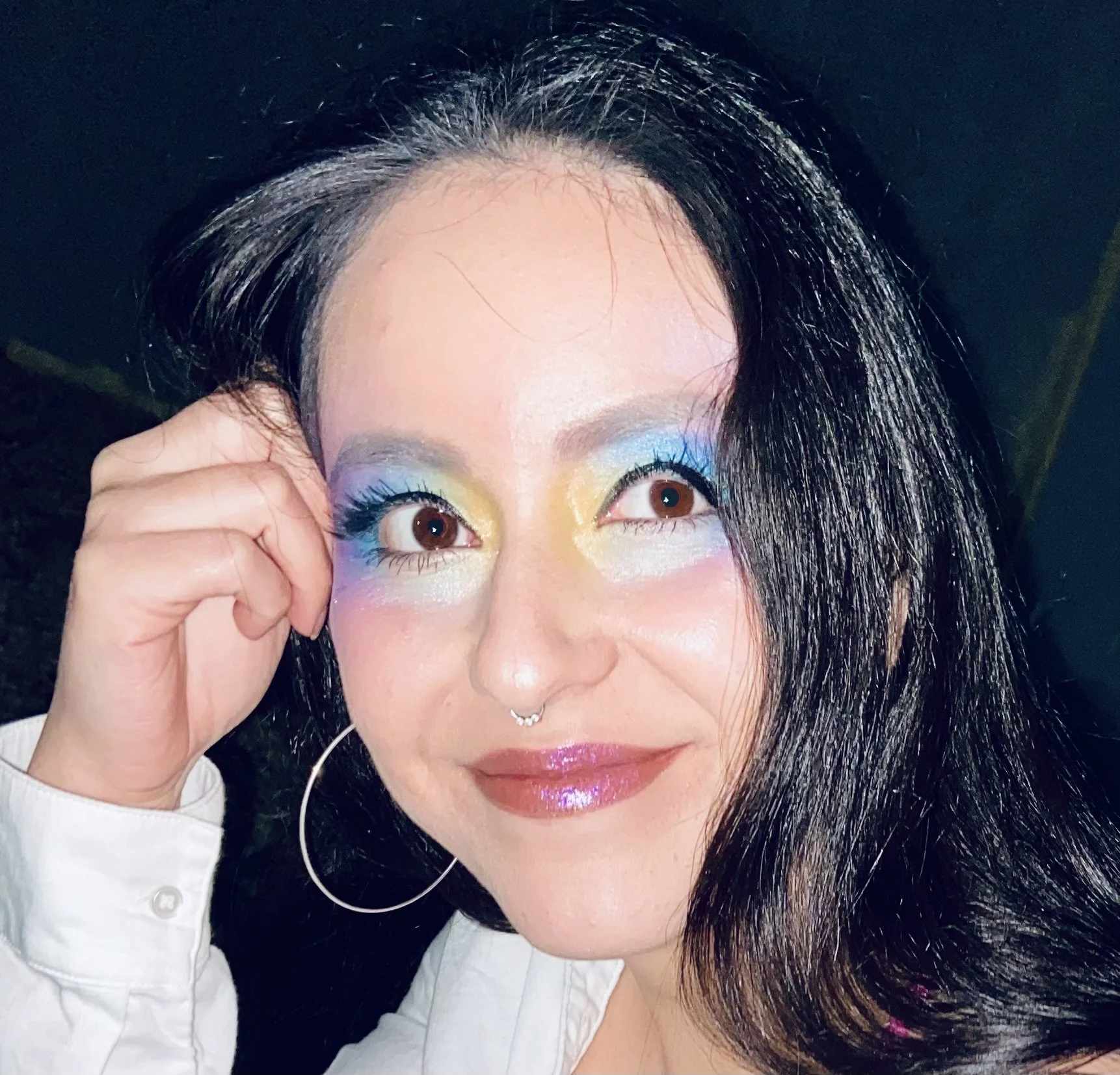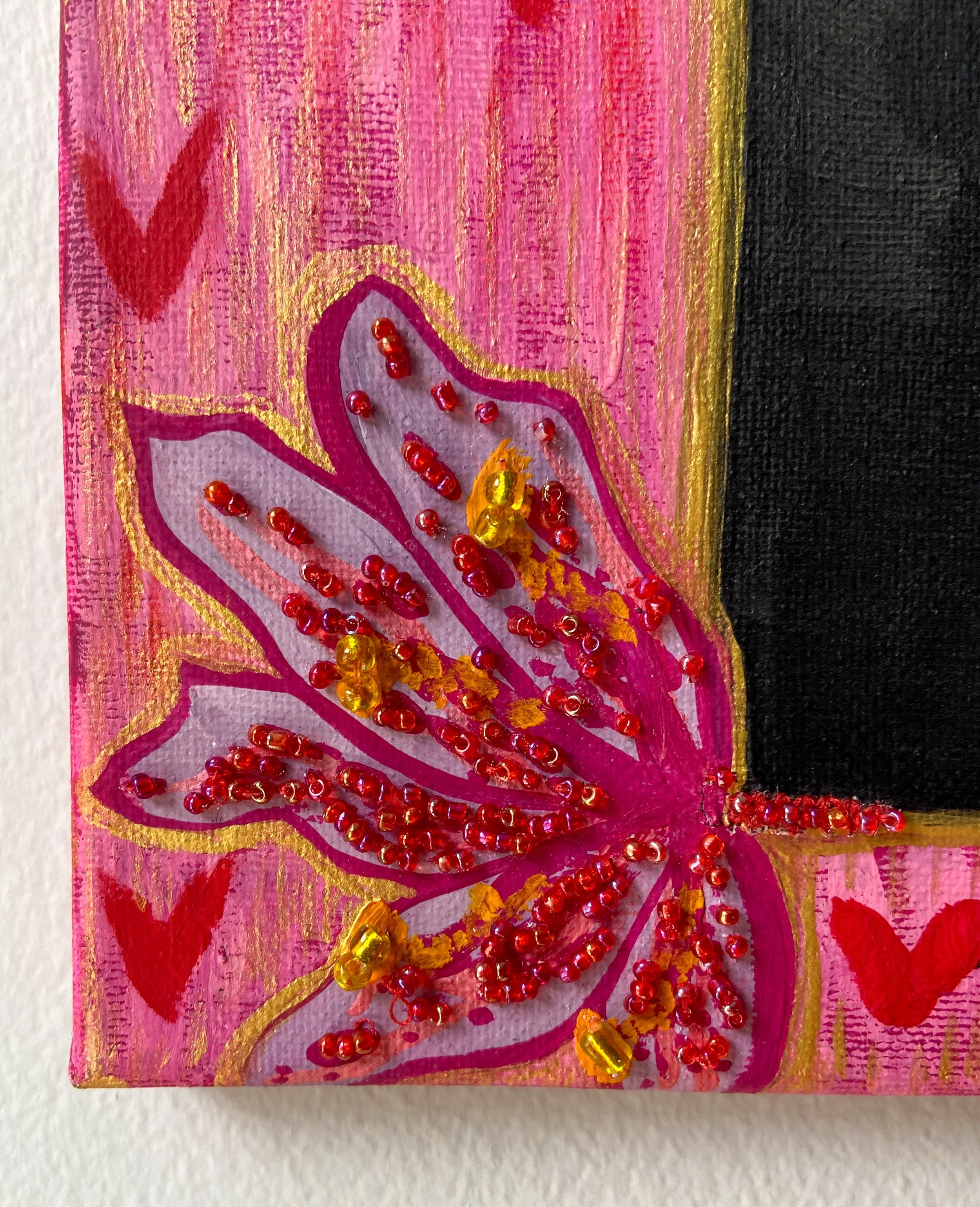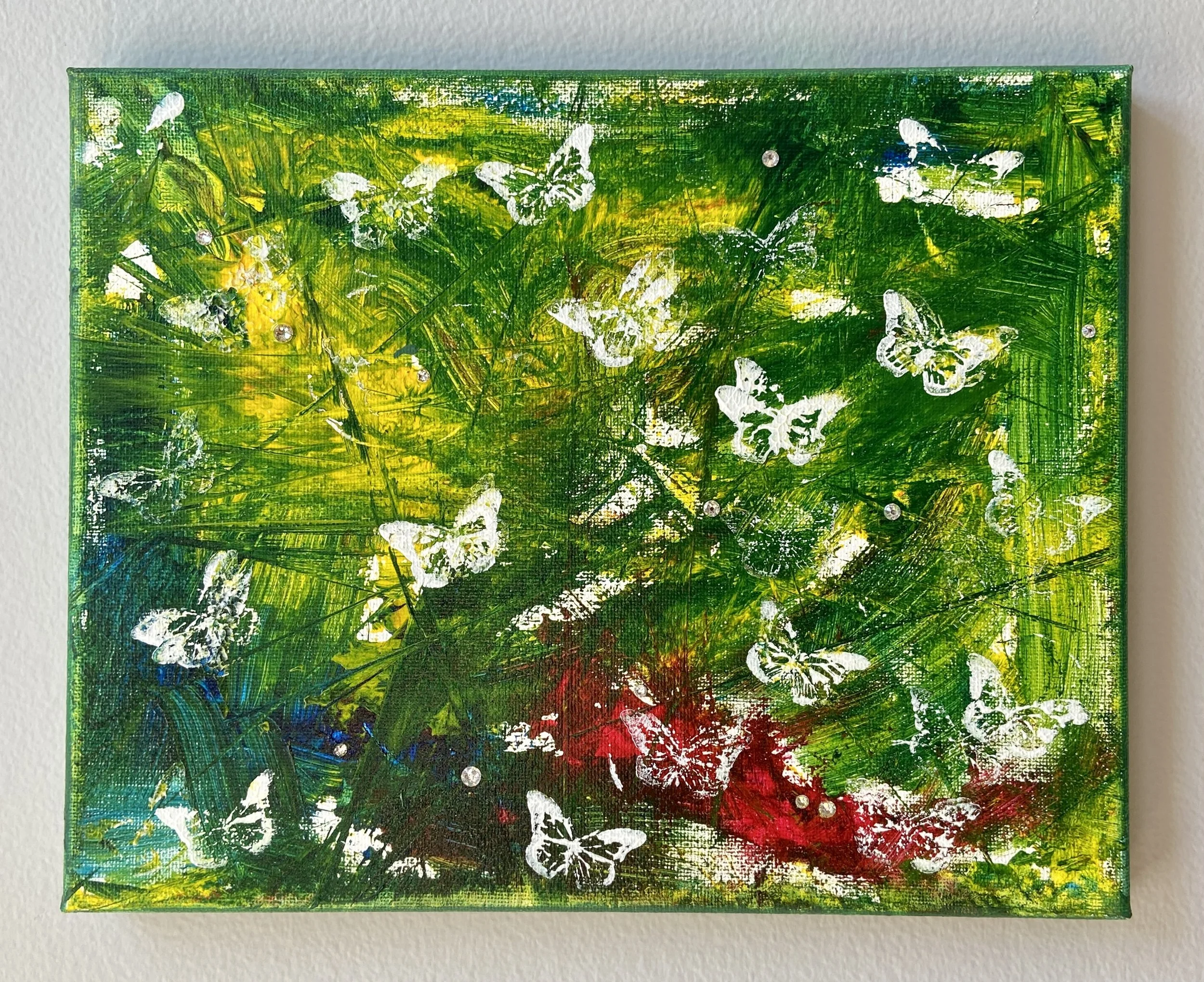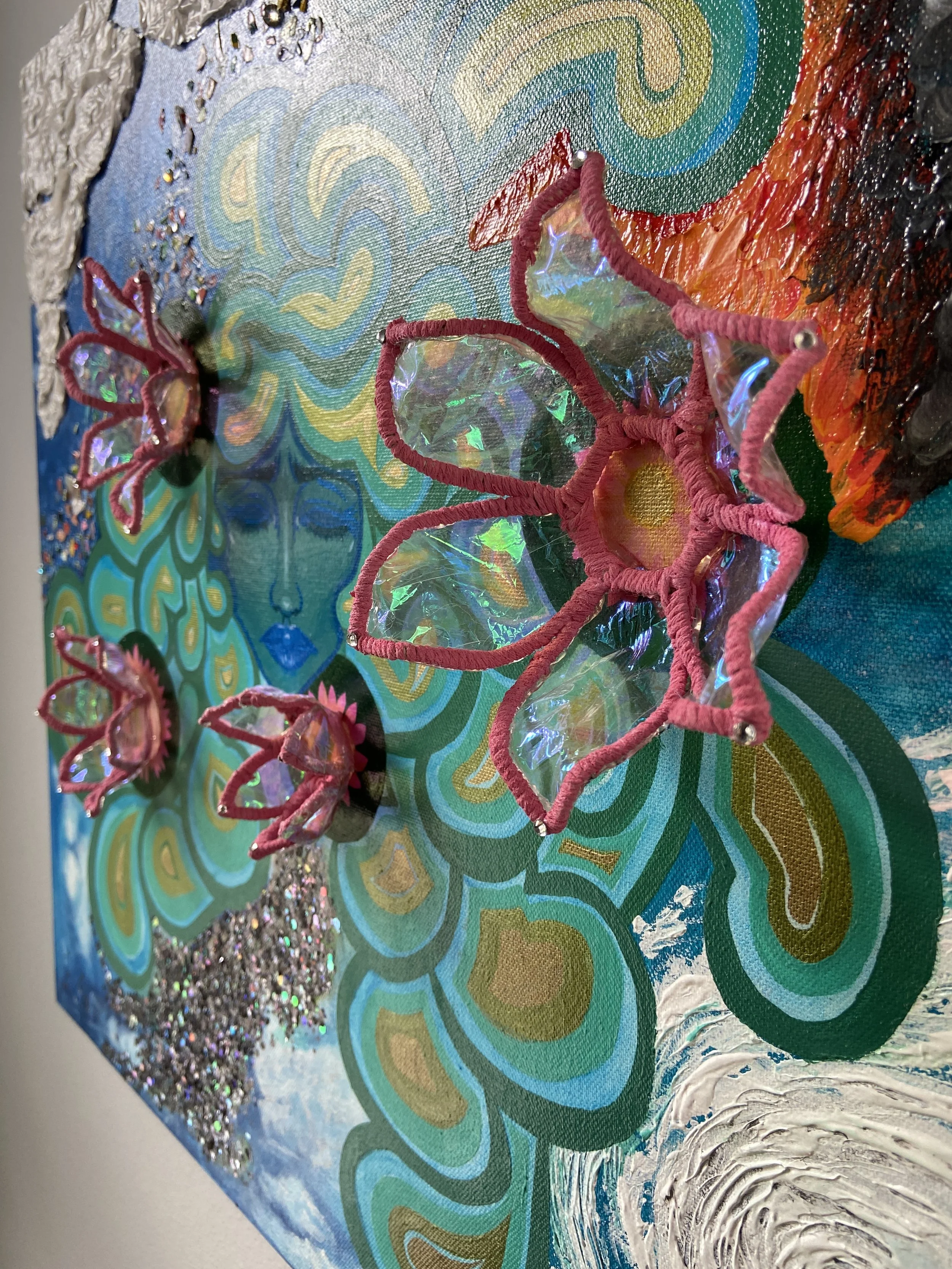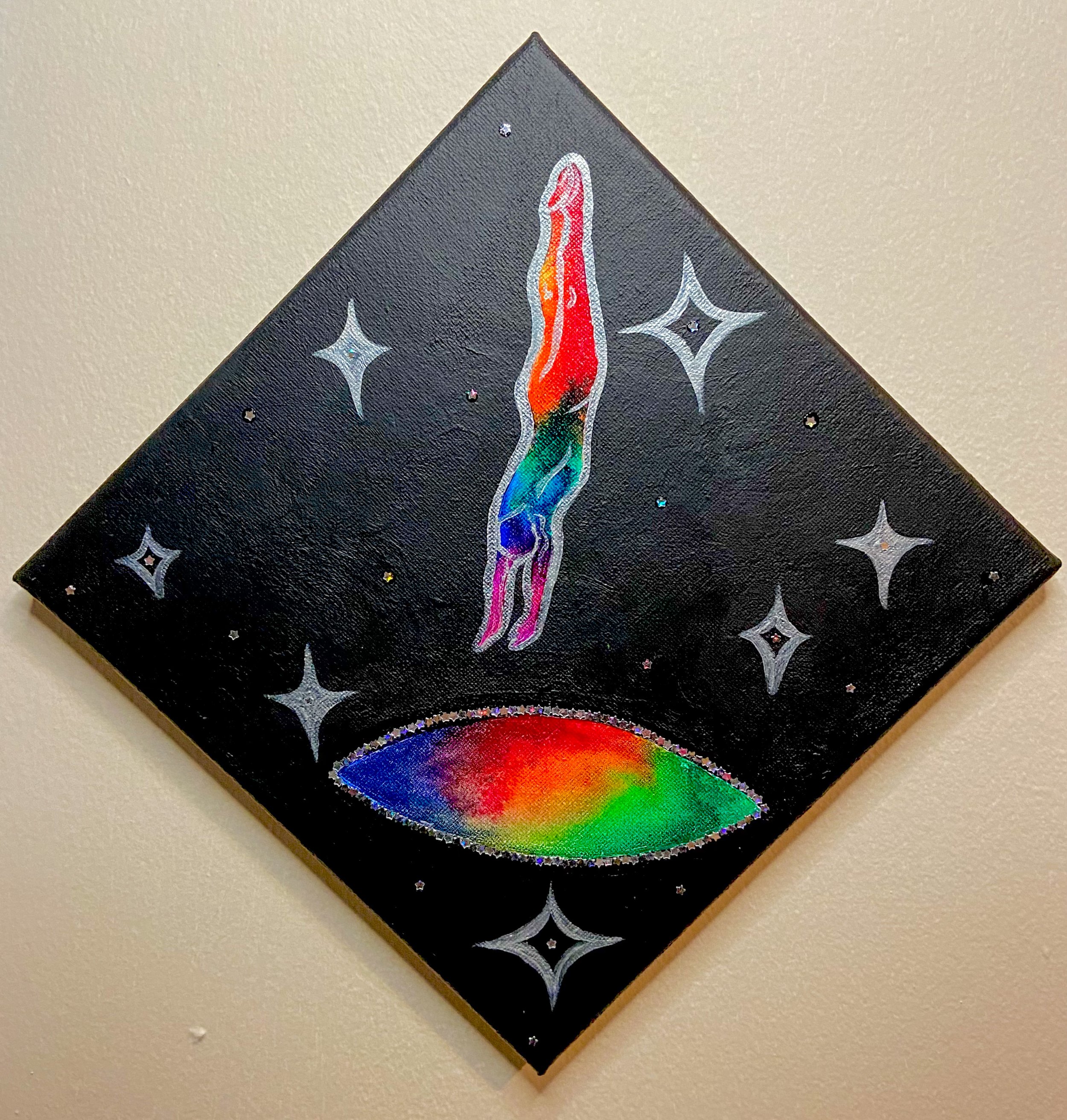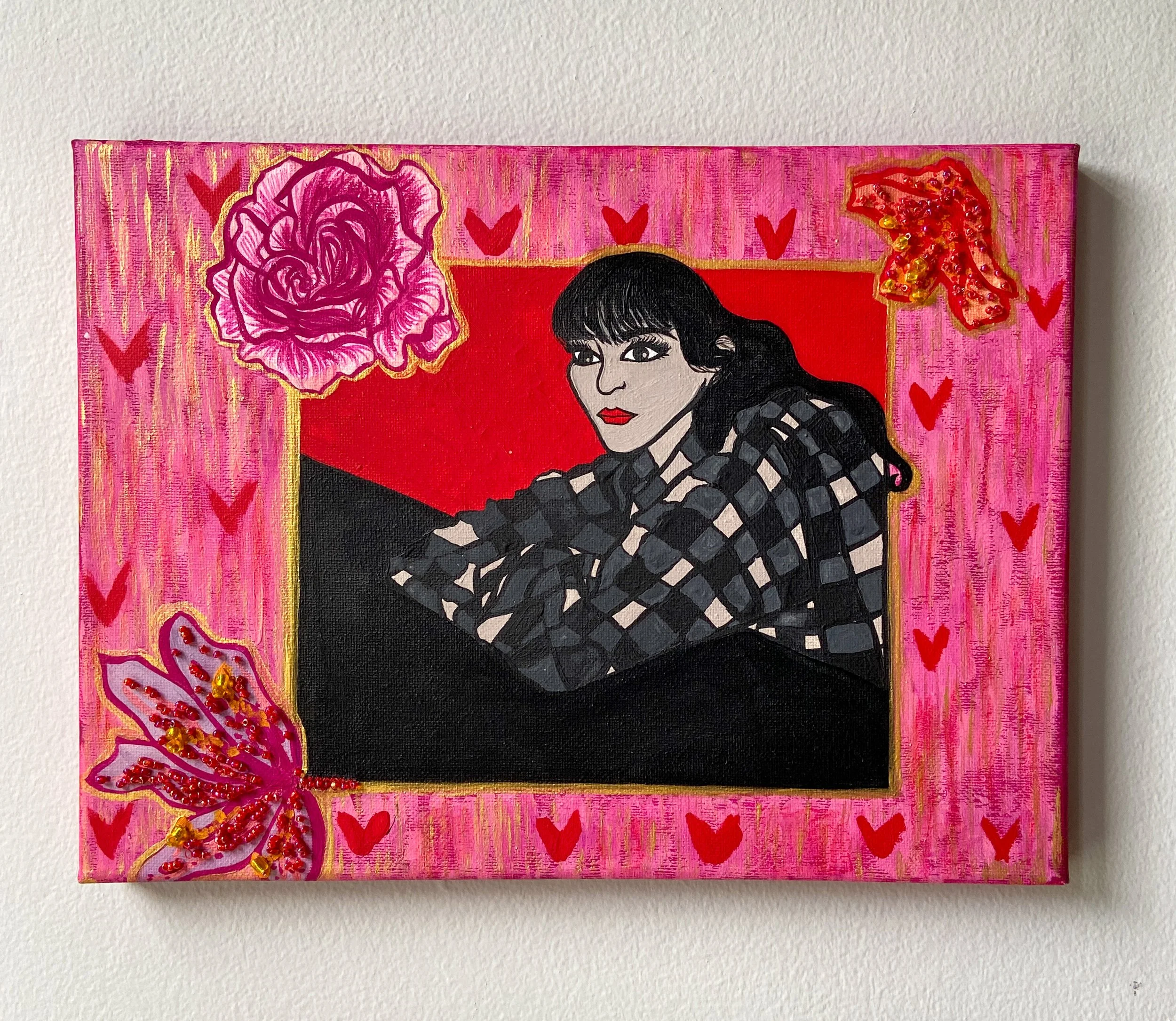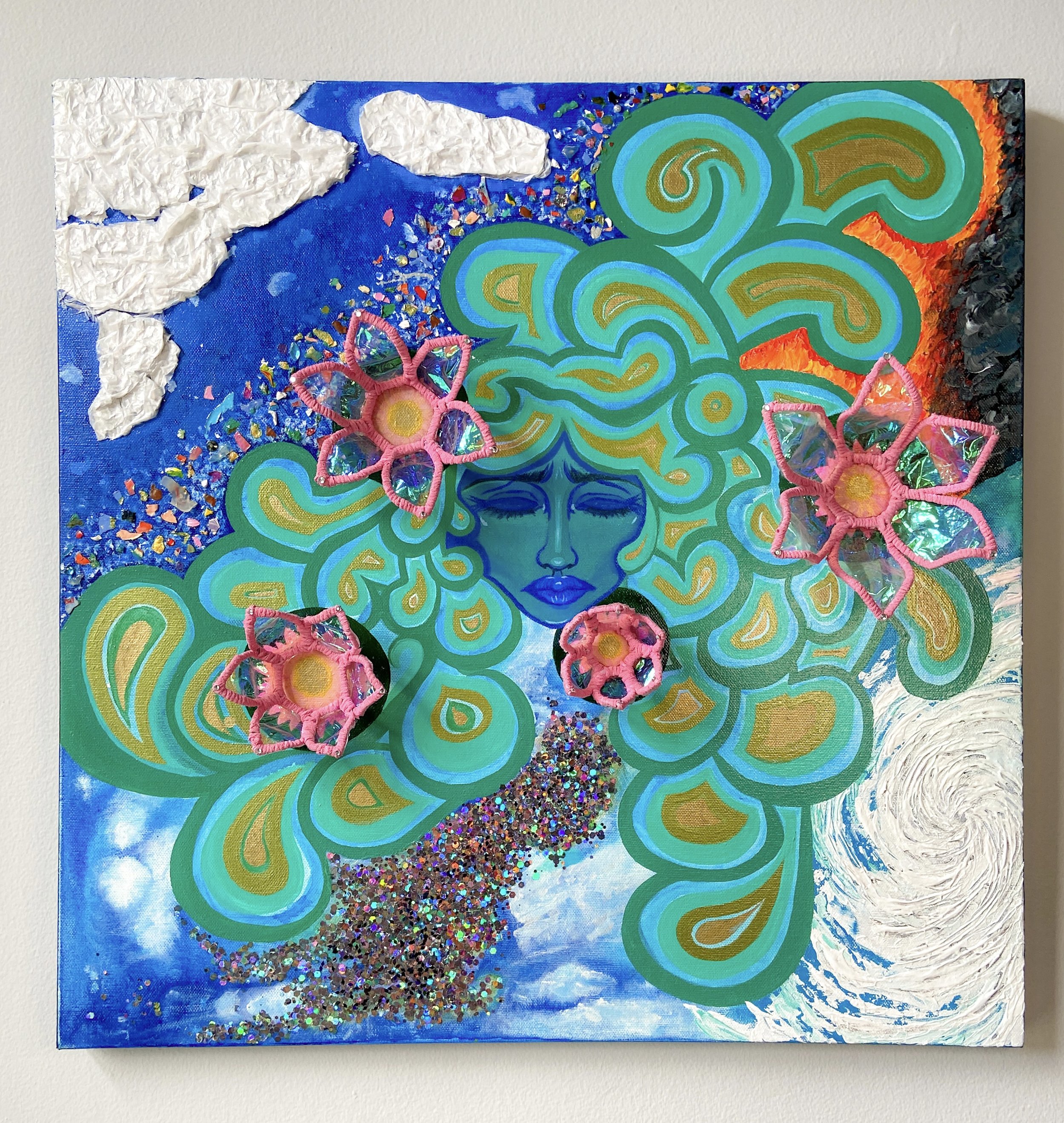In the Studio with Artist Natalie Cruz
Today, we’re going In the Studio with artist Natalie Cruz. Cruz’s artwork will be on display in the Chesapeake Arts Center’s Voices of Hispanic & Latinx Artists gallery exhibit, September 7 - October 17.
Natalie Cruz is a queer multimedia artist based in Silver Spring, MD. Born in Los Angeles, CA, to Salvadoran immigrants, she pays homage to the bright, vivacious technicolor of animation she loved as a kid while weaving them into her own stories. As the star of her own movie, Natalie incorporates fantastical escapism in color and line to portray her process of dealing with trauma and depression. She contemplates her relationships with herself, her family, the world, and divinity, retaining a distinct style through portrait, abstract, and 3D elements. As a passionate environmentalist, Natalie incorporates found materials such as discarded wire decoration, cellophane, and takeout bags to highlight the effects of human over-consumption on the environment and the individual psyche. She loves the metamorphosis of turning unassuming ingredients into splendid, impactful images.
Why did you choose to be an artist?
As much as I chose this path, divinity gave me my innate gift and desire. Reflecting on the signs in my childhood, I remember countless instances where the opportunities presented themselves to me. From getting caught (and yelled at) working on an art assignment during a math lesson to winning a library poster art contest, the desire to create has been a ubiquitous theme throughout my life. Once, while waiting in the car with my grandmother, she asked me that timeless question: “ What do you want to be when you grow up?” I considered all the options and confidently landed on an artist. She cautioned me against the profession, citing the recession caused by the housing market crisis as an example of why artists would get left behind. She suggested a more necessary occupation like a doctor or lawyer. Ironically, her work as a professional handywoman and her affinity for DIY established a foundation for artistic vocation in my life. Without all her work in our local churches and through congregation members, I would not have fallen in love with the vibrant colors of stained glass mosaics and the potential for beauty that refreshing transformation can bring.
Where are you from, and how does it affect your work?
I was born and raised in Los Angeles, CA, to Salvadoran immigrants with ancestry ranging from the indigenous to Central America Nonualco tribe, Palestine, and the French/German border. My mom refers to pan-ethnic, whereas I like to use global citizen. As a result of the systematic erasure of cultural history and colonization, a large amount of my family history is difficult to track down. By taking on the responsibility of being the documentarian, I create a legacy for all that is lost. I take in the rich color, tradition, and history of artisan works from El Salvador through my palette and use of blocking and outline. I sprinkle in Hollywood's saturated technicolor and fantasia, paying homage to public graffiti art and movie studio animation of the late 90s and 2000s. As my art career expands, so will my travel opportunities so that I may integrate my Middle Eastern and European ancestry into my style and technical practice.
Do you work on one piece of art at a time or multiple?
Definitely multiple at a time. I get so many ideas that I get excited about that I don’t want to lose or forget them. I’m learning to bottle my inspiration into action and funnel it into the follow-through of my projects, so I don’t have more half-finished works than completed ones. At the same time, I try to keep in mind that the due process will take however long it needs to. I think of cicadas and how they burrow for seven years before reemerging, and despite the broad spectrum of human opinions on the species, I give them credit for taking their time and space. Some pieces are cicadas, others are butterflies.
Who would be your dream artist to collaborate with?
There are so many artists that I would love to work with; if I listed them all, this paragraph would be nothing but names. On the local level, working with Miss CheLove, a DC-based art director, muralist, designer, and illustrator, would be a dream. I adore her color expertise and community-based themes. It’s inspiring and empowering to see a woman of color create many beloved and impactful displays of public art that add so much character. A perfect example of a project I would like to collaborate on for something similar would be the ‘Warrior Guardians’ mural at Hotel Zena.
How does art impact our society?
Art is humanity's most outstanding, inexhaustible contribution to the global community. While it denotes opulence, art should not be a luxury few can afford. In its many forms, art is the undefinable thread that connects us, the natural world, ourselves, and divinity. Art moves us to emotions we can’t explain and relates stories we could never have imagined. It opens doors and materializes new avenues of thought and perception. It helps us to define our identities through expression, allows us permission to grow, and gives us tangible markers of evolution. Art provides us a mission to create with purposeful intention no matter how big or small the impact is; even a pebble makes a difference in the ocean.
Does your gender impact your art? If so, how?
Absolutely. Despite the stereotype that the arts are feminine-dominated fields and that women make up a higher percentage of total artists, men are more represented in galleries and earn more money. The sentiment of dismissal and erasure goes the same for many fields I’ve been keenly interested in, like law and STEM. As a result, my art centers mostly on women as subjects, especially the emotional experience of being a woman. My exhibited paintings are portraits of mothers, one real and one imagined. Their facial expressions relay an adopted stoicism regarding their environment, maintaining a highly sought-after beauty expected of women. In contrast, their frames are busy, cluttered, off-kilter, almost spilling out of control. Everything they keep under wraps from the public persona bleeds into their aura and is dealt with or cleaned in solitude. I aim to bring these sentiments to the surface and integrate the alchemy of women and their power as they navigate a healthier relationship with themselves and the world.
What's your biggest barrier to being an artist? How do you address it?
As an emerging artist, my most significant barriers are resources and time. Making a career out of art takes a lot of dedicated time, self-belief, and devotion, especially for someone not from a financially privileged background. In the immigrant community, pursuing careers in creative fields could be better-advised. Far too often, I’ve heard stories of counseled creative and artistically talented children to have a backup plan, go to college with high-paying majors in mind, and avoid the consequences of becoming a starving artist. That logic fails to hold up when more opportunities open to creatives. I witnessed the volta of technology in my childhood and have seen many boulevards that artists can occupy, allowing more hope for success than ever before. As much as I consider art a passionate technical practice, it also requires a skillful business acumen that can rival almost any other entrepreneurial pursuit. Any successful business owner will tell you that the secret is balance and persistence. Integrating these, along with a near-delusional mentality that everything will work out for the unimaginable best, has been and continues to be the gracious reason for waking up and progressing on this majestic journey.
Voices of Hispanic and Latinx Artists
Hal Gomer Gallery | September 7 2023 - October 17, 2023
Artist Reception: September 21, 6 pm - 8 pm
Gallery Hours:
Monday-Thursday 10am-6pm | Saturday 10am-1pm

